(285) Doll’s Festival in Tsuchiura
文字数 3,776文字
Tsuchiura City, which is next to Tsukuba City where I live, used to be a Syukuba-machi on the Mito Highway.
(※Syukuba-machi (宿場町)is a place with inns and teahouses for lodging and resting of travelers, and facilities for men and horses.)
Tsuchiura is a town where commerce prospered as an important point of water and land transportation adjacent to Lake Kasumigaura.
Nakajyou Street, which is adjacent to the ruins of Tsuchiura Castle, used to be the center of commerce in Tsuchiura City since the Edo period.
Tsuchiura Machikado Kura "Daitoku", which revived the kimono merchant "Daitoku", consists of four buildings built at the end of the Edo period: Mise-gura, Sode-gura, Moto-kura, and Mukai-gura. Misegura has a tourist information center.
Tsuchiura Machikado Kura "Nomura", located across from "Daitoku", has three Kura that were built between the late Edo period and the early Meiji period. The first floor of the main building is a rest area, and the second floor is a museum. Sode-gura is used as a multi-purpose studio, Bunko-gura is used as a gallery space for exhibiting various artworks, and Renga-gura is used as a coffee shop.
The Tsuchiura Doll Festival (February 4th to March 3rd) is held at about 70 locations around Tsuchiura Machikado Kura.
Hina dolls from the Edo and Meiji periods, hand-made "Tsurushi bina", "Karen Hina dolls(霞蓮ひな人形)" using lotus roots and leaves from the largest lotus root production area in Japan, and "Kasumi dolls (かすみ人形)" made from Tanishi (pond snail shells) from Lake Kasumigaura are on display.
So, a little while ago, we went to see the Hina dolls in Tsuchiura.
"Kasumi dolls" are dolls created by a local Japanese painter, Sozan Kanbayashi, using Tanishi (pond snail) from Lake Kasumigaura in the early Showa period. After that, Mr. Fusajiro Nakao, who was the only one who made "Kasumi dolls", also passed away. Currently, a few members of the Kasumi Doll Preservation Research Society second generation are producing "Kasumi Dolls" (information from 2018). Recently, pond snails in Lake Kasumigaura have become scarce and very valuable.
Hina dolls can be broadly divided into two types: Kyo-bina and Edo-bina (Kanto-bina). Kyo-bina is modeled after the imperial court and court nobles. Edo-bina are modeled after samurai families.
Among the Hina dolls that represent Kyo-bina, there are the Imperial Palace Hina dolls, which reproduce the gorgeous ceremonial costumes of the imperial family.
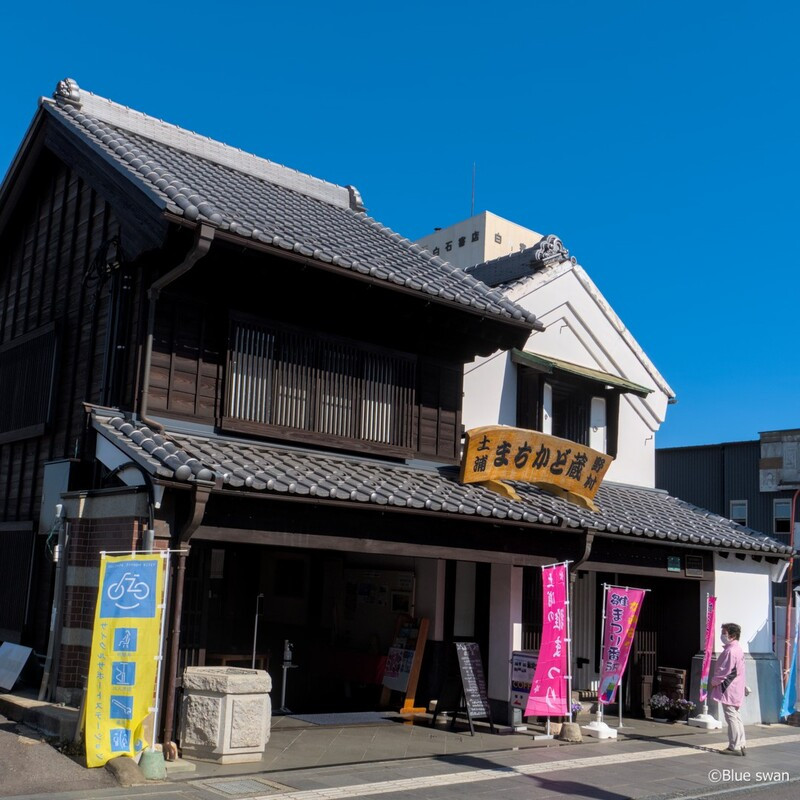
① This is Tsuchiura Machikado Kura "Nomura". Hina dolls are displayed in the white building with pink flags.
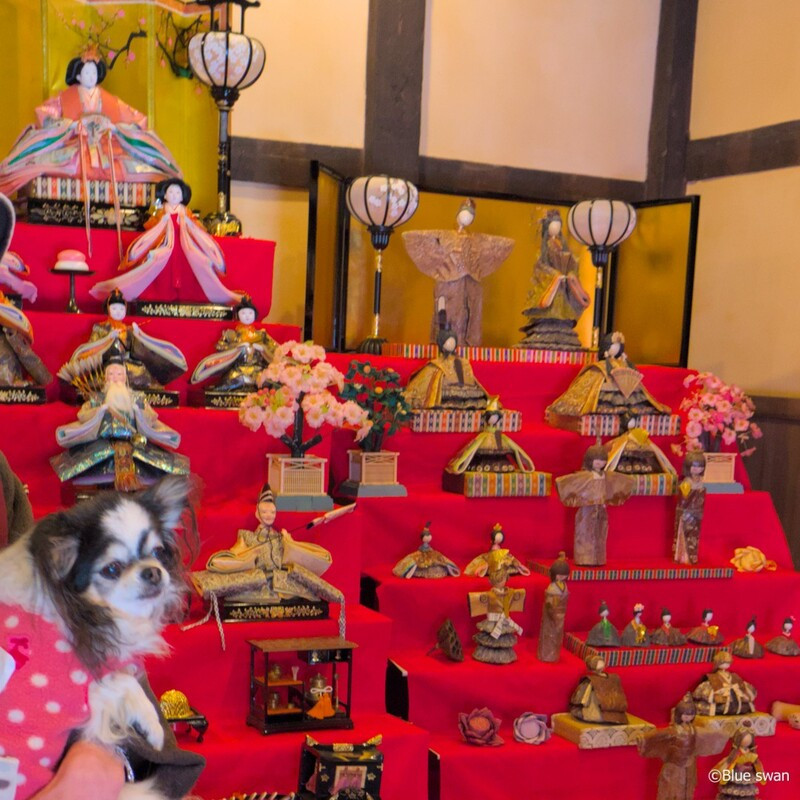
② These are the Hina dolls in Nomura.
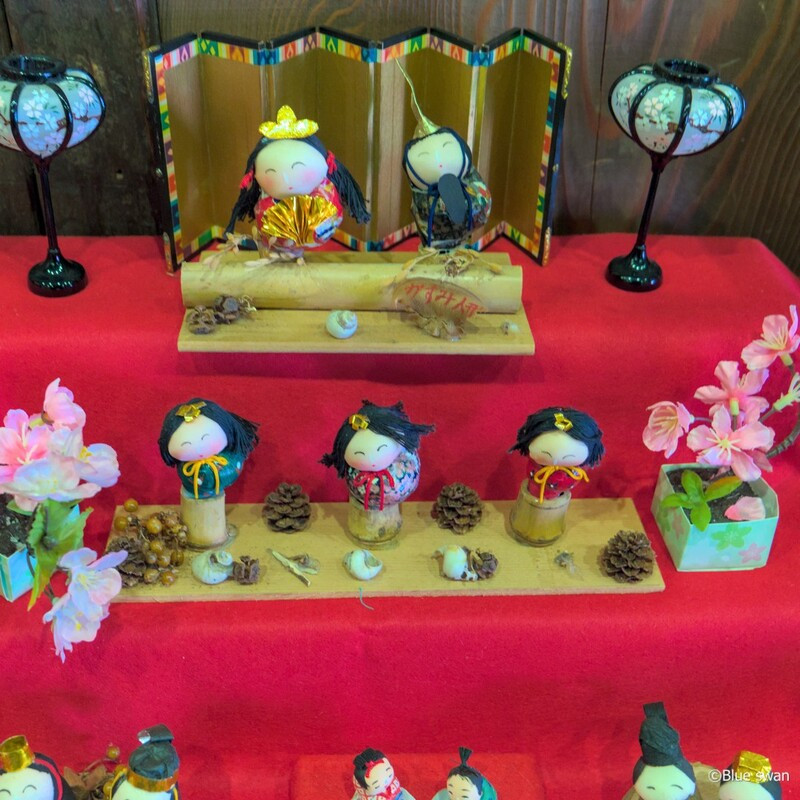
③ These are the "Kasumi dolls". Can you recognize the pond snail shells?
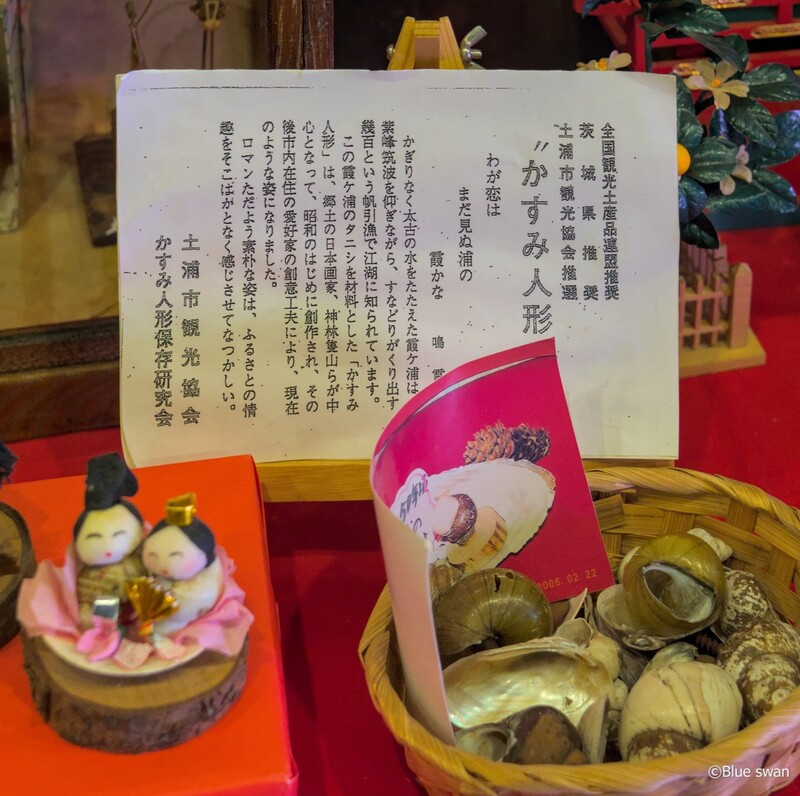
④These are "Kasumi dolls."
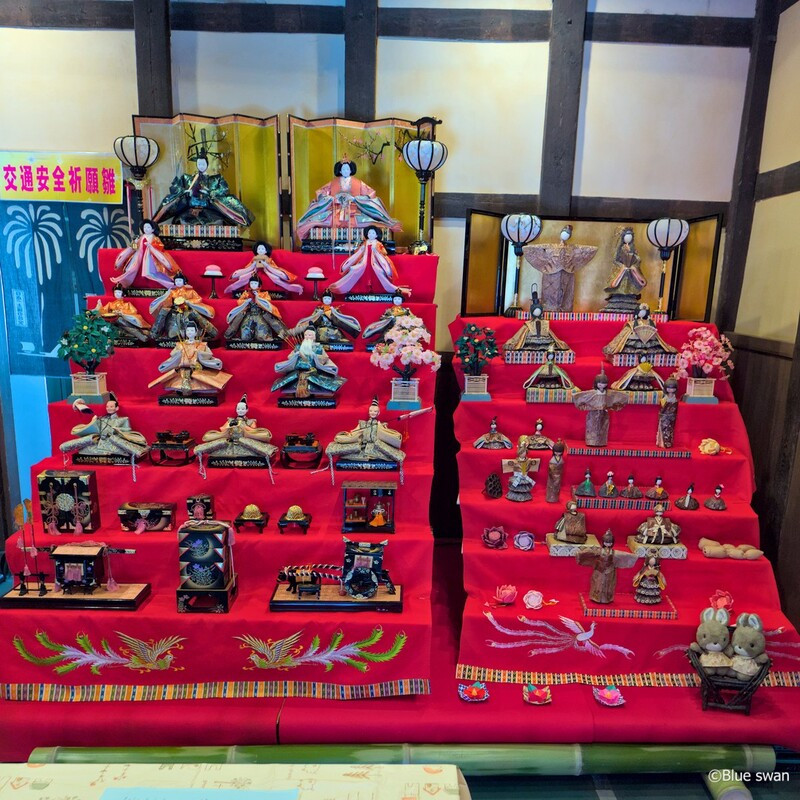
⑤ The dolls on the left are normal Hina dolls, and the ones on the right are "lotus root Hina dolls".
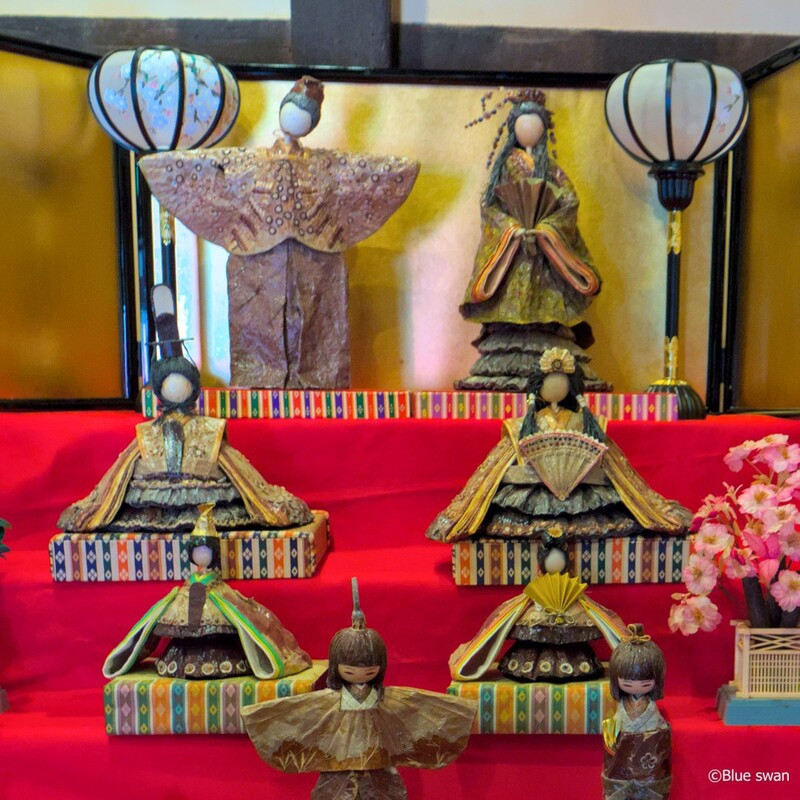
⑥ This is a close-up photo. The kimono is made from lotus leaves.
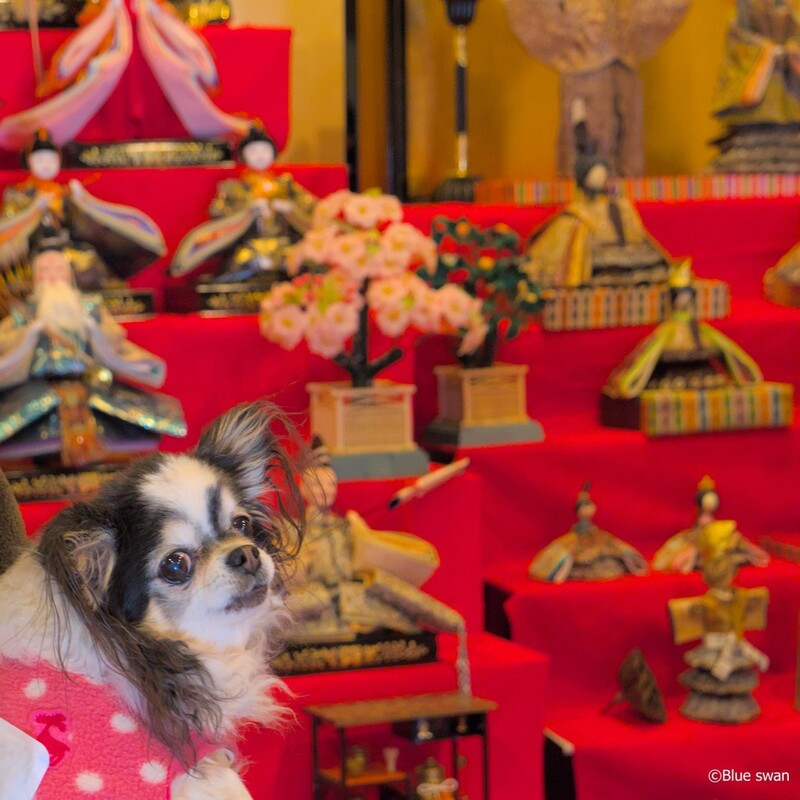
⑦ I’m looking around and thinking it's time to leave.
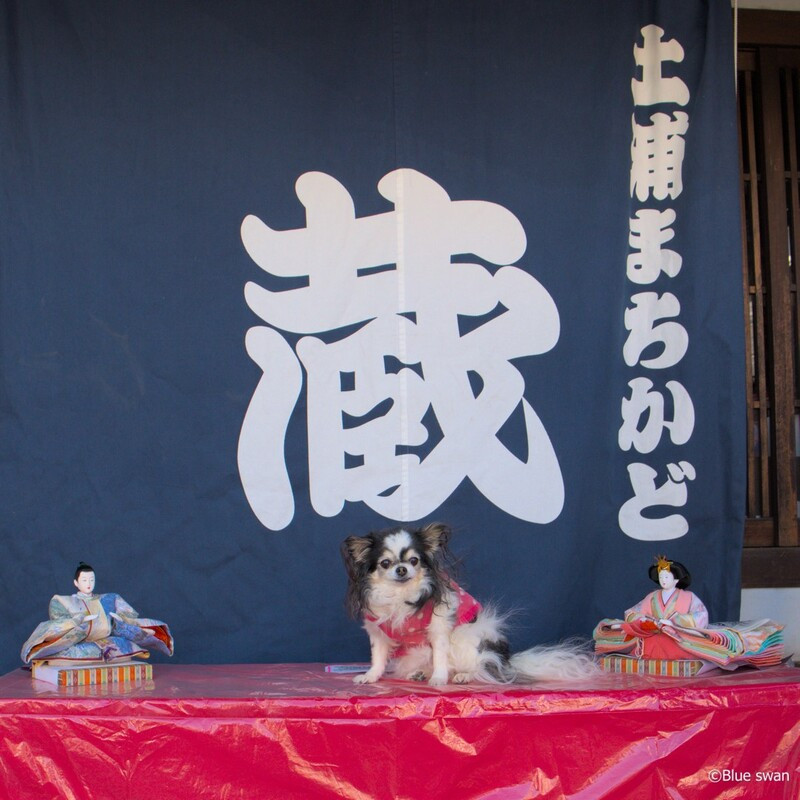
⑧ I am in front of "Daitoku". Dogs were not allowed inside, so this is the only photo of Daitoku.
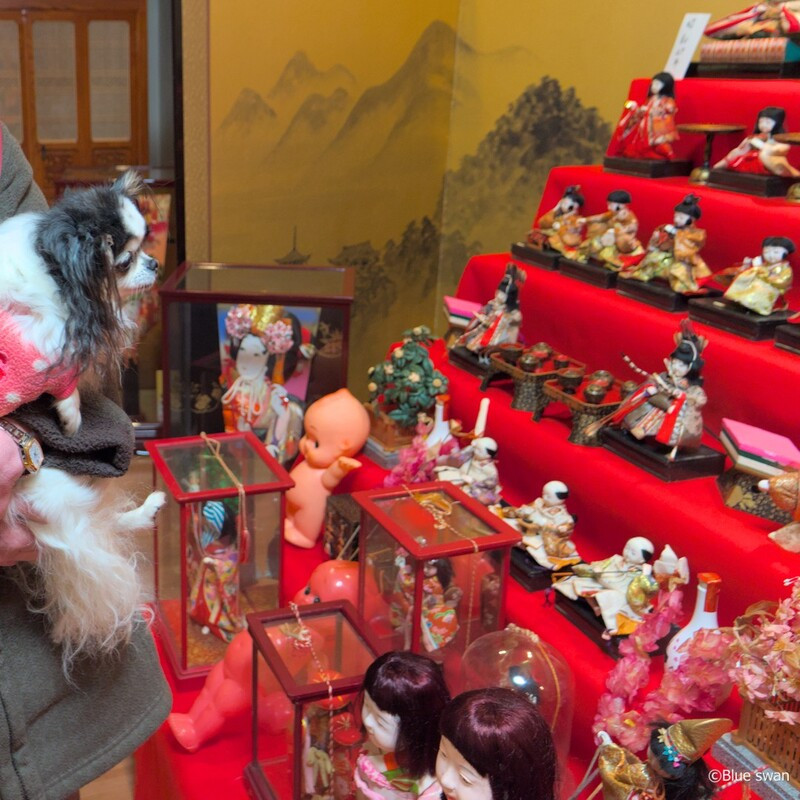
⑨ We visited a private residence recommended by festival staff.

⑩ There are a great number of Hina dolls. Too many to fit in one photo.
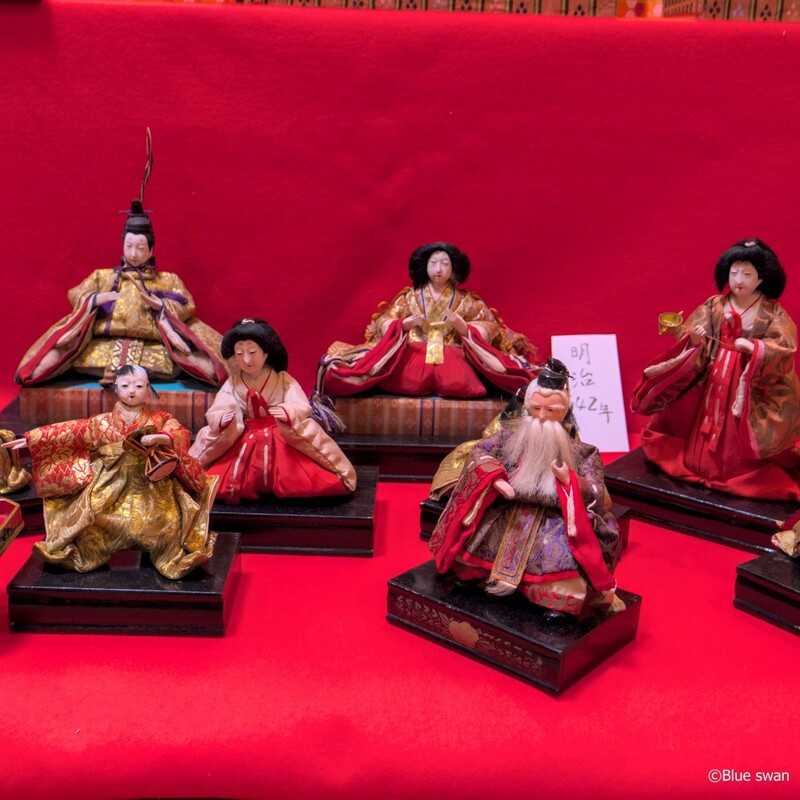
⑪ These are Hina dolls made in 1909.
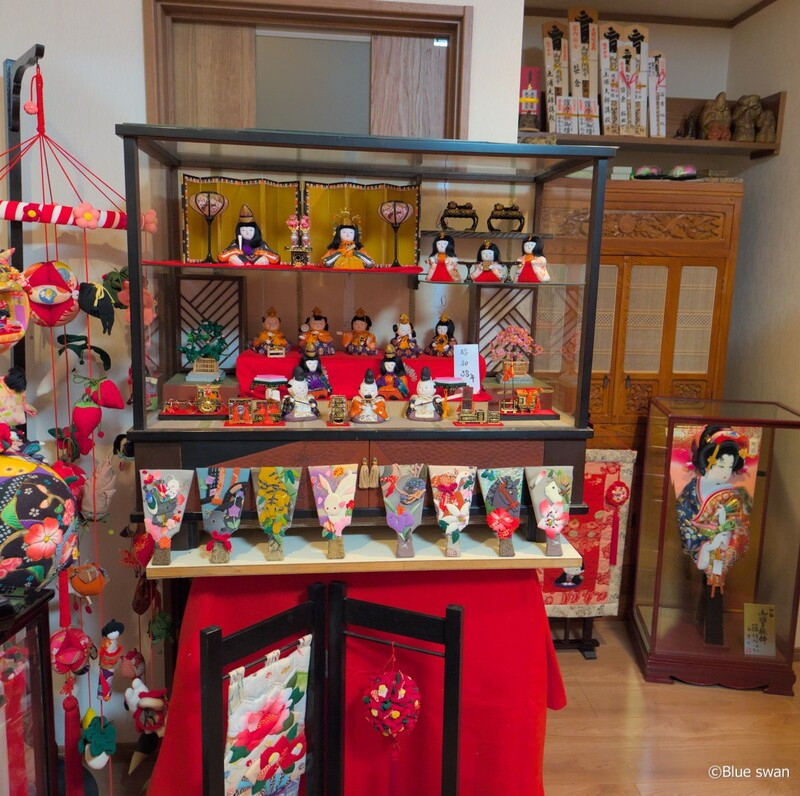
⑫ There are decorative battledores, Hina dolls and hanging Hina dolls. The number of Hina dolls and battledores increased each time a girl was born, including his granddaughters, to reach the current number.
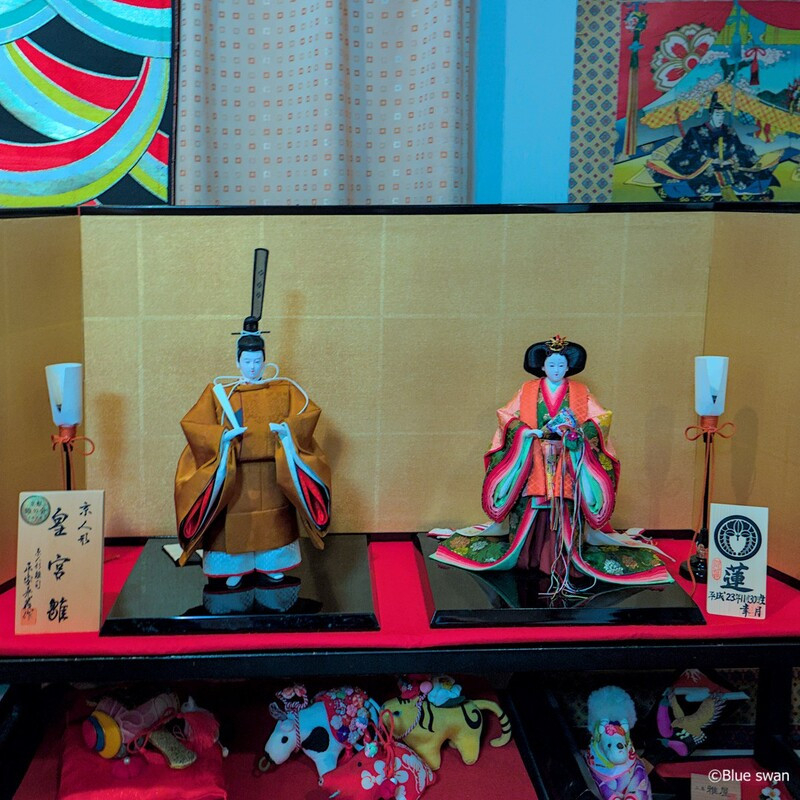
⑬ These are imperial Hina dolls that reproduce the formal ceremonial costumes of the imperial family.
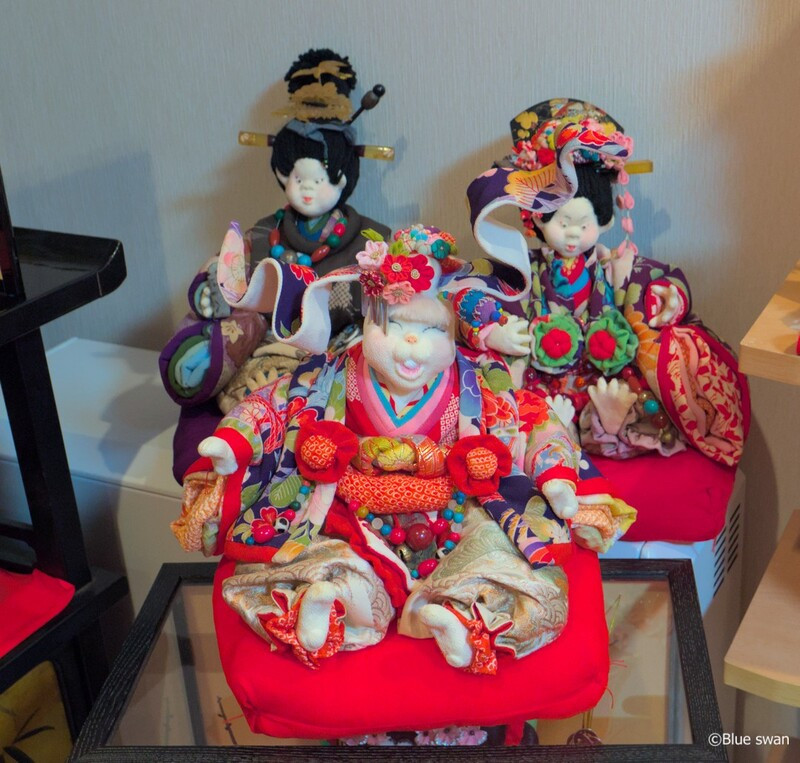
⑭These are big size fashion Hina dolls that are popular these days.

⑮ I'm trying to be quiet so as not to disturb Mom while she takes pictures.
(※Syukuba-machi (宿場町)is a place with inns and teahouses for lodging and resting of travelers, and facilities for men and horses.)
Tsuchiura is a town where commerce prospered as an important point of water and land transportation adjacent to Lake Kasumigaura.
Nakajyou Street, which is adjacent to the ruins of Tsuchiura Castle, used to be the center of commerce in Tsuchiura City since the Edo period.
Tsuchiura Machikado Kura "Daitoku", which revived the kimono merchant "Daitoku", consists of four buildings built at the end of the Edo period: Mise-gura, Sode-gura, Moto-kura, and Mukai-gura. Misegura has a tourist information center.
Tsuchiura Machikado Kura "Nomura", located across from "Daitoku", has three Kura that were built between the late Edo period and the early Meiji period. The first floor of the main building is a rest area, and the second floor is a museum. Sode-gura is used as a multi-purpose studio, Bunko-gura is used as a gallery space for exhibiting various artworks, and Renga-gura is used as a coffee shop.
The Tsuchiura Doll Festival (February 4th to March 3rd) is held at about 70 locations around Tsuchiura Machikado Kura.
Hina dolls from the Edo and Meiji periods, hand-made "Tsurushi bina", "Karen Hina dolls(霞蓮ひな人形)" using lotus roots and leaves from the largest lotus root production area in Japan, and "Kasumi dolls (かすみ人形)" made from Tanishi (pond snail shells) from Lake Kasumigaura are on display.
So, a little while ago, we went to see the Hina dolls in Tsuchiura.
"Kasumi dolls" are dolls created by a local Japanese painter, Sozan Kanbayashi, using Tanishi (pond snail) from Lake Kasumigaura in the early Showa period. After that, Mr. Fusajiro Nakao, who was the only one who made "Kasumi dolls", also passed away. Currently, a few members of the Kasumi Doll Preservation Research Society second generation are producing "Kasumi Dolls" (information from 2018). Recently, pond snails in Lake Kasumigaura have become scarce and very valuable.
Hina dolls can be broadly divided into two types: Kyo-bina and Edo-bina (Kanto-bina). Kyo-bina is modeled after the imperial court and court nobles. Edo-bina are modeled after samurai families.
Among the Hina dolls that represent Kyo-bina, there are the Imperial Palace Hina dolls, which reproduce the gorgeous ceremonial costumes of the imperial family.

① This is Tsuchiura Machikado Kura "Nomura". Hina dolls are displayed in the white building with pink flags.

② These are the Hina dolls in Nomura.

③ These are the "Kasumi dolls". Can you recognize the pond snail shells?

④These are "Kasumi dolls."

⑤ The dolls on the left are normal Hina dolls, and the ones on the right are "lotus root Hina dolls".

⑥ This is a close-up photo. The kimono is made from lotus leaves.

⑦ I’m looking around and thinking it's time to leave.

⑧ I am in front of "Daitoku". Dogs were not allowed inside, so this is the only photo of Daitoku.

⑨ We visited a private residence recommended by festival staff.

⑩ There are a great number of Hina dolls. Too many to fit in one photo.

⑪ These are Hina dolls made in 1909.

⑫ There are decorative battledores, Hina dolls and hanging Hina dolls. The number of Hina dolls and battledores increased each time a girl was born, including his granddaughters, to reach the current number.

⑬ These are imperial Hina dolls that reproduce the formal ceremonial costumes of the imperial family.

⑭These are big size fashion Hina dolls that are popular these days.

⑮ I'm trying to be quiet so as not to disturb Mom while she takes pictures.
